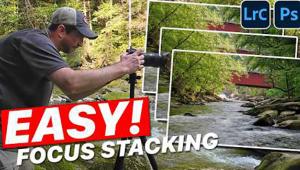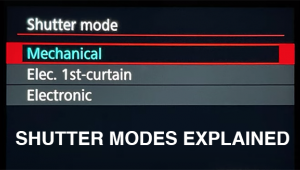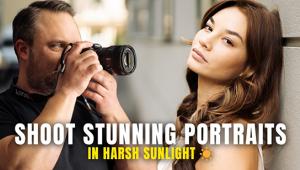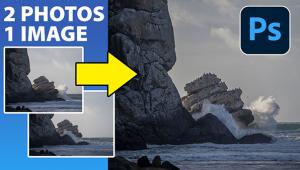Wide Angle Lenses
Wide Angle Lenses
Get A Unique Point Of View
by Jim Zuckerman
I have already defined what wide angle lenses are and discussed the tremendous depth of field they offer. There are other characteristics they have that are worth noting as well. Wide angle lenses are invaluable tools that give you tremendous creative potential in your picture taking.
The Distortion Factor
Many camera store salesmen sometimes try to dissuade beginning photographers from buying a lens that is extremely wide because they say it distorts reality too much. It is true that as the focal length shortens, the amount of distortion increases. However, this isn’t necessarily bad.
 |
|
|
Wide angle lenses distort in three ways. First, they cause vertical lines to appear as if they are converging at a distant point. You can see what this looks like in two different shots of a medieval building in Riga, Latvia (#1 and #2). In the vertical composition, the building seems to be leaning backwards and the edges are angled inward such that they create a diminishing perspective. In the horizontal shot, the convergence is even more exaggerated. As the back of the camera becomes more oblique to the plane of the building’s façade—in other words, as the camera is angled upward—the exaggeration becomes more and more pronounced.
 |
|
|
You can increase or decrease this kind of distortion by changing the focal length. The wider the angle of the lens, the more distortion you get, and as the back of the camera (i.e. the plane of the digital sensor) becomes more parallel with the façade, the distortion of the architecture is diminished or eliminated altogether.
Second, wide angle lenses distort perspective. They elongate a scene and create an unreal sense of depth. You can see this exemplified in (#3 and #4). The cathedral in Vilnius, Lithuania certainly had a high ceiling, but the 14mm lens I used exaggerated that and dramatized the perspective. In the photo of a windmill in Holland, the rows of tulips seem to extend forever thanks to a 16mm focal length.
 |
|
|
 |
|
|
Third, wide angle lenses make the foreground seem disproportionately large. This creates drama and impact in images, and it’s often used by landscape photographers, fashion shooters, and many other types of image makers who employ this kind of attention-getting look.
For example, photo (#5) shows how a wagon wheel I found in Missouri Town near Kansas City seems so huge in relation to the background. This was taken with a 14mm lens and the closest point on the wheel was 18” from the lens. In photo (#6), a friendly Swiss cow was looking for a close encounter as I laid on the ground and shot upward with a 16mm lens. Notice how large the animal’s head appears relative to the body and the rest of the image.
 |
|
|
 |
|
|
The closer the subject is to the lens, the more distorted it appears. I photographed my wife in the stunning pool in the famous Gellert Hotel in Budapest, Hungary with a 14mm lens (#7), and she was only about 3 ft away from me. I used Photoshop to replace the blown out glass dome in the ceiling, but the exaggerated foreground is what makes this image so strong.
 |
|
|
In each of these examples, I would not say there was “too much” distortion. It may be too much for some people, but I like these effects, and the fact that our eye never sees this makes it even more intriguing. This is one reason that I teach students it’s important to think as the lens sees when you are out shooting. By this I mean that you have to know how your lenses interpret the world and then in your mind’s eye you must search for compositions not as you see them but as the lens will capture them. If you try to capture a scene as you see it, you will often be disappointed.
The Digital Dilemma
As I have already explained, cameras with sensors that are smaller than full frame magnify the focal length. If you like the drama and visual impact of extreme wide angle lenses, a focal length that has traditionally been considered very wide no longer qualifies. For example, an 18–200mm zoom is now 27–300mm for Nikon (the multiplication factor is 1.5x for Nikon) and for the Canon it is 29–320mm (the multiplication factor is 1.6x for Canon). Therefore, you will need to consider one of the new generation lenses made specifically to solve this problem. In the Nikon arsenal, you can buy a 12–24mm lens which is equivalent to an 18–36mm lens on a full frame sensor camera, and for Canon the 10-22mm equals an effective 16–35mm wide angle. These lenses do not work on full frame cameras. Other manufacturers offer similar ranges.
This underscores the point that one lens isn’t enough if you are looking for maximum creativity. You need at least two lenses—a wide angle zoom and a lens that encompasses a good range of telephoto focal lengths. If you try to include both ends of the spectrum, you will fall short when it comes to wide angle capability.
Vignetting
Sometimes you will experience darkened corners in photos taken with wide angle lenses. You can see an example of this in (#8). This tends to happen more with extreme wide angles, and it’s usually caused by the combination of a small lens aperture and a filter screwed onto the front of the lens. It doesn’t matter what the filter is—a polarizing filter, a neutral density filter, or a filter that produces some kind of special effect—because it’s the thickness of the filter ring that is slightly coming into focus. More expensive “thin” filters might help solve this problem.
 |
|
|
Another cause of vignetting is lens hoods. If the wrong lens hood is used—such as a hood for a 35mm lens on a 16mm wide angle—the edge of the hood will darken the corners of the picture area because the coverage by the lens is so wide it actually includes the outside edge of the hood. It’s out of focus, of course, but it’s still an undesirable effect. Another manifestation of this problem occurs when you use very wide angle lenses with your built-in flash, which might not “cover” or illuminate the wide angle of view the lens affords.
Fisheye Lenses
A unique type of wide angle lens is the fisheye. This is an ultra wide lens that also bends vertical and horizontal lines. When you photograph round subjects like a spiral staircase or cathedral dome (#9 and #10), there is no apparent distortion because it’s not possible to make something that is already round, more round. Shooting upward with a fisheye is one of my favorite ways to use this lens. It can be used for nature subjects as well, such as the fog enshrouded trees
in (#11).
 |
|
|
 |
|
|
 |
|
|
The fisheye I use is a 15mm lens. It has almost complete depth of field from just a few inches in front of the lens to infinity. You can see the typical distortion it produces in the photo of my son on our deck (#12), and in the curvature of the columns in a beautiful cathedral in Dresden, Germany (#13). Note that all the horizontal lines above the center point in the picture—the railing and horizon—curve downward while the edge of the deck being below the mid-point is curved upward.
 |
|
|
 |
|
|
Fisheye lenses typically encompass a 180? angle of view. This is so wide that sometimes you have to be careful or it will include things you don’t want in the frame, such as your feet. When I photographed down through the wooden stairway in a lighthouse on Lindau Island, Germany (#14), I had to move my feet out of the frame and hold the camera out away from my body to get this picture.
 |
|
|
Fisheyes have limited use, but it is fun to do experimental pictures once in a while. I always carry one with me because sometimes they enable me to produce something unique and visually compelling.












































